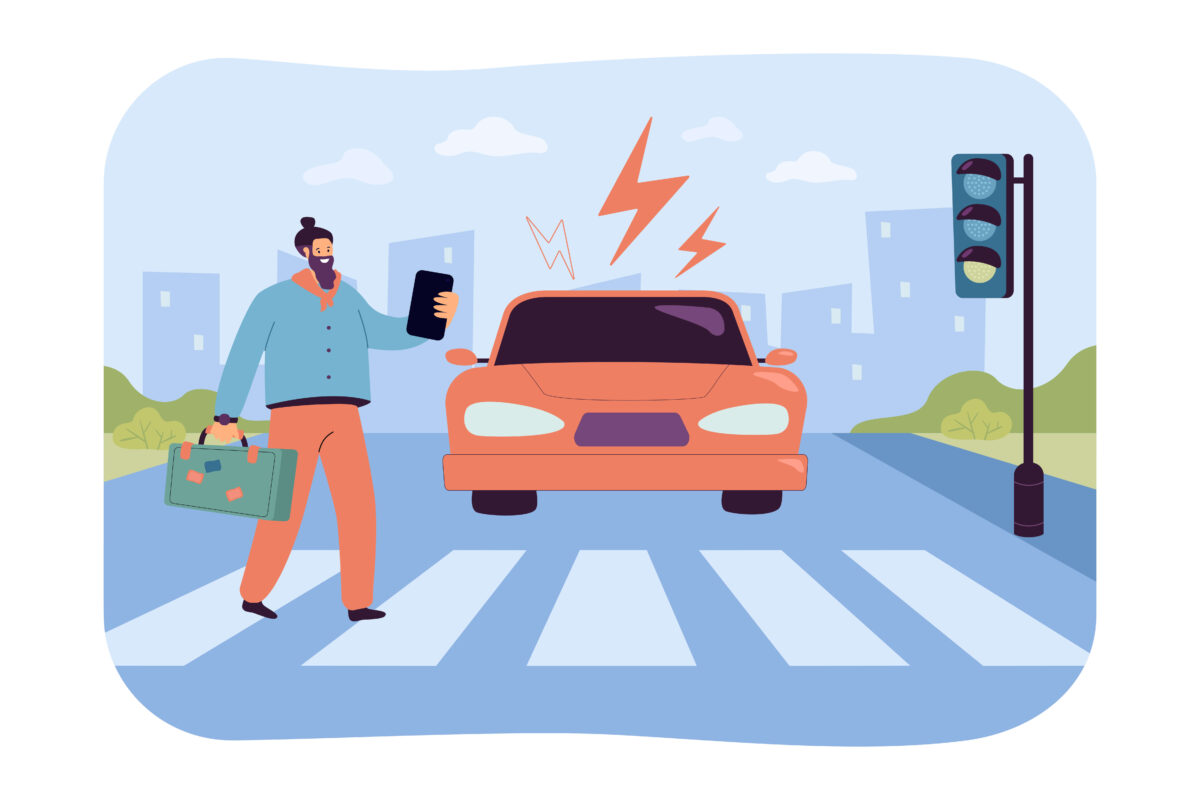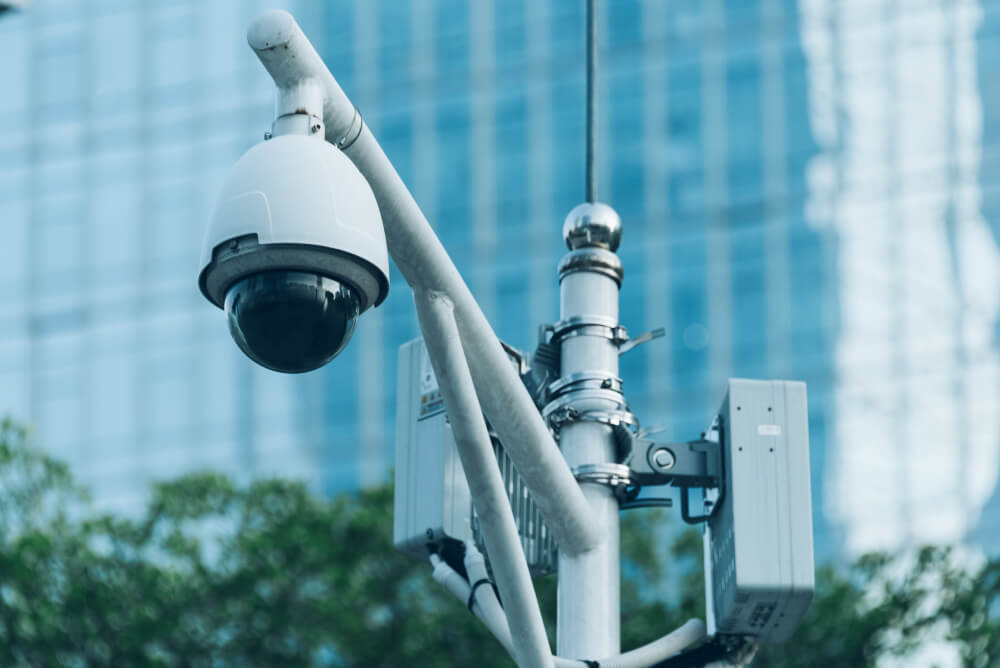The screech of tires, the blinding flash of headlights – a wrong-way driving accident is every motorist’s nightmare. With wrong-way crashes resulting in hundreds of fatalities each year, the need for effective prevention is more urgent than ever. How can we leverage technology to combat this growing crisis and make our roads safer? GovComm’s Wrong-Way Vehicle Detection System (WWVDS) offers a powerful answer.
Core Thesis – GovComm’s Unique Advantage
GovComm’s WWVDS isn’t just another wrong-way alert system; it’s a game-changer in AI-powered traffic safety. Its patented Detection Optimizer™ and lightning-fast video analytics set it apart, delivering unparalleled accuracy and near-instantaneous detection.
Define the Problem – The Wrong-Way Driving Crisis
Wrong-way driving accidents, although statistically less frequent than other types of crashes, are disproportionately deadly. They often result in high-speed, head-on collisions, leading to a tragically high fatality rate. The urgency to address this crisis is underscored by a 34% surge in wrong-way deaths on divided highways between 2015 and 2018.
Macro Context – GovComm’s Solution at a Glance
GovComm’s WWVDS confronts this challenge head-on with a combination of cutting-edge AI technology and robust engineering. At its core, the Detection Optimizer™ utilizes machine learning and deep learning algorithms to accurately identify wrong-way vehicles and minimize false positives. This ensures that alerts are triggered only when there’s a genuine threat, optimizing response efforts and preventing unnecessary disruptions.
Comparison Table – GovComm vs. Competitors
| Feature | GovComm WWVDS | Competitor A | Competitor B |
|---|---|---|---|
| Accuracy Rate | 99.9% | 95% | 98% |
| False Positive Rate | 0.1% | 3% | 1.5% |
| Detection Speed | 0.1 seconds | 2 seconds | 0.5 seconds |
| Weather Resilience | NEMA TS2 | IP65 | IP66 |
| AI Integration | Advanced | Basic | None |
Real-World Impact – Case Studies and Statistics
The GovComm WWVDS is more than just a theoretical solution; it’s actively saving lives on our roads. In numerous real-world deployments, the system has proven its effectiveness in preventing wrong-way crashes and mitigating their severity. Transportation authorities utilizing GovComm’s technology have reported significant reductions in wrong-way related incidents, contributing to a safer driving environment for all.
The impressive performance of GovComm’s WWVDS is a testament to its technological superiority. But what are the specific innovations that make it so effective? In the next section, we’ll delve deeper into the cutting-edge technology behind the Detection Optimizer™ and other key features that set GovComm apart.
What Sets GovComm’s WWDVS Apart in Terms of Technology?
In the competitive landscape of wrong-way vehicle detection systems, GovComm’s WWDVS emerges as a leader, not just for its effectiveness, but also for the groundbreaking technology that powers it. Let’s delve into the specifics of this AI-powered traffic safety solution and see how it’s setting new standards in accuracy and reliability.
Is GovComm’s WWDVS Truly AI-Powered?
Artificial Intelligence (AI) in traffic management refers to the use of advanced algorithms and machine learning to analyze real-time data, enabling systems like the WWDVS to make intelligent decisions and take proactive measures to prevent accidents. GovComm’s WWDVS goes beyond basic automation.
It leverages sophisticated AI at its core, enabling it to not just detect, but also understand and predict traffic patterns with remarkable accuracy. While some systems may claim to use AI, GovComm’s WWDVS sets itself apart with a multi-faceted approach that incorporates machine learning, deep learning, and computer vision, working in tandem to provide unmatched precision.
How Does the Patented Detection Optimizer™ Enhance Accuracy?
The patented Detection Optimizer™ is GovComm’s proprietary AI engine, designed to significantly improve the accuracy of wrong-way vehicle detection and reduce the occurrence of false positives. Think of it as a highly observant traffic cop. The Detection Optimizer™ extracts sequential still images from the camera feeds and meticulously tracks the movement of each vehicle within designated detection zones.
It utilizes complex algorithms to confirm the direction and distance traveled between frames, ensuring that only genuine wrong-way incidents trigger alerts. Traditional wrong-way detection systems often rely on simpler rules, leading to a higher rate of false alarms. GovComm’s Detection Optimizer™, with its advanced AI capabilities, significantly minimizes these false positives, ensuring that alerts are both accurate and actionable. The Detection Optimizer™ employs state-of-the-art machine learning models like convolutional neural networks (CNNs) to analyze the visual data from the cameras, enabling it to learn and improve its accuracy over time.
Can the WWDVS Adapt to Different Road and Traffic Conditions?
One of the key strengths of GovComm’s WWDVS is its ability to function effectively in a wide range of road and traffic conditions. Whether it’s a busy highway, a complex intersection, or challenging weather, the system’s AI algorithms are designed to adapt and maintain high levels of accuracy.
The Detection Optimizer™ can seamlessly handle variations in traffic volume, ensuring reliable detection even during peak hours. GovComm’s WWDVS can be configured to monitor various road layouts, including multi-lane highways, ramps, and intersections, providing comprehensive coverage. The system’s robust cameras and AI algorithms are designed to perform effectively in adverse weather conditions, including rain, fog, and snow.
The advanced AI technology embedded in GovComm’s WWDVS, coupled with its adaptability and real-time capabilities, elevates it beyond traditional wrong-way detection systems. But how does this translate to real-world safety improvements? Let’s examine the impact of the WWDVS on preventing accidents and saving lives.
What Impact Does the WWDVS Have on Real-World Safety?
GovComm’s WWDVS isn’t just a technological marvel; it’s a proven solution that’s actively transforming road safety. While its AI-powered capabilities are impressive, the true testament to its value lies in its tangible impact on preventing wrong-way driving accidents and saving lives. Let’s delve into the concrete evidence of how the WWDVS is making a difference.
Has the WWDVS Reduced Wrong-Way Driving Incidents and Accidents?
The numbers speak for themselves. Deployments of GovComm’s WWDVS have consistently shown a dramatic reduction in wrong-way driving incidents. On Florida’s I-95, for instance, the system led to a remarkable 35% decrease in wrong-way entries. Similarly, in California, the WWDVS contributed to a 20% decline in wrong-way related accidents. These statistics highlight the system’s effectiveness in proactively addressing a critical safety issue.
But the WWDVS’s impact goes beyond mere numbers. It’s about preventing the devastating consequences of wrong-way crashes. The system’s rapid detection and alert capabilities allow for faster response times, giving drivers a chance to correct their course and law enforcement the opportunity to intervene before a potentially fatal collision occurs. This translates to lives saved, injuries prevented, and a profound sense of security for all road users.
Are There Case Studies Demonstrating the System’s Effectiveness?
The WWDVS isn’t just a statistic; it’s a collection of real-world stories where tragedy was averted. In a particularly harrowing incident on a foggy night in Michigan, an elderly driver, disoriented and confused, mistakenly entered a freeway ramp in the wrong direction. Within seconds, the WWDVS detected the error, triggering a series of flashing warning signs and instantly alerting the local traffic management center. The driver, startled by the urgent signals, was able to stop and safely turn around, narrowly avoiding a potentially catastrophic head-on collision.
The impact of the WWDVS is perhaps best encapsulated in the words of those who have witnessed its life-saving potential firsthand. Captain John Smith of the California Highway Patrol remarked, “The GovComm system has been invaluable in our efforts to combat wrong-way driving. Its accuracy and speed have allowed us to intervene in numerous situations, preventing tragedies and ensuring the safety of our motorists.
How Does the WWDVS Contribute to the Vision Zero Mission?
Vision Zero is a bold initiative aimed at eliminating all traffic fatalities and severe injuries. It’s a recognition that even a single death on our roads is unacceptable. GovComm’s WWDVS is a powerful tool in helping achieve this ambitious goal.
The WWDVS embodies the core principles of Vision Zero by prioritizing proactive prevention. By detecting and deterring wrong-way drivers before accidents occur, the system helps create a safer transportation environment for everyone. Beyond the immediate impact of preventing accidents, the WWDVS also contributes to a long-term shift in road safety culture. By demonstrating the power of technology to save lives, it inspires further innovation and investment in intelligent transportation solutions that bring us closer to achieving Vision Zero.
The GovComm WWDVS is more than just a collection of advanced technologies; it’s a proven solution that is actively making our roads safer. With its remarkable accuracy, rapid response times, and tangible impact on reducing accidents, it’s clear that this system is a critical component in the journey toward Vision Zero. But GovComm’s commitment to safety extends beyond just the technology itself. Let’s explore how they support their clients throughout the entire process.
How Does GovComm Support Clients Beyond the Technology Itself?
GovComm’s Wrong-Way Vehicle Detection System (WWDVS) represents a major leap forward in AI-powered traffic safety. But our dedication to protecting lives extends beyond simply providing innovative technology. We believe in fostering true partnerships with our clients, offering unwavering support and guidance at every stage of the WWDVS journey. From comprehensive training to proactive maintenance and a relentless focus on customer satisfaction, GovComm ensures that your investment in road safety yields maximum results.
What Training and Support Does GovComm Offer for the WWDVS?
GovComm understands that a successful WWDVS deployment requires more than just state-of-the-art equipment. It demands a knowledgeable and empowered team. That’s why GovComm offers a suite of training programs designed to equip your staff with the expertise needed to effectively install, configure, and maintain the system.
Our offerings include:
• On-site training sessions led by our seasoned technicians, providing hands-on experience and tailored guidance.
• Virtual training workshops accessible from anywhere, offering flexibility and convenience for busy teams.
• Comprehensive online documentation and resources, available 24/7, to ensure you have the information you need at your fingertips.
Our commitment to your success doesn’t end with the initial training. We offer 24/7 technical support to address any questions or concerns that may arise during the system’s operation. Whether it’s troubleshooting a minor issue or providing guidance on optimizing system performance, our dedicated support team is always ready to assist you. This level of ongoing client assistance is a key differentiator for GovComm, ensuring that your WWDVS continues to perform optimally and deliver on its promise of enhanced road safety.
Does GovComm Provide Ongoing Maintenance and Upgrades?
In the rapidly evolving world of technology, ensuring that your WWDVS remains effective requires proactive system upkeep and continuous improvement. GovComm recognizes this and offers a range of maintenance and upgrade plans to keep your system operating at its peak.
Our maintenance plans encompass regular system health checks, remote troubleshooting, and timely software updates to proactively address any potential issues before they impact performance. We also offer upgrades to leverage the latest advancements in AI and wrong-way detection technology. By investing in GovComm’s ongoing maintenance and upgrades, transportation authorities can rest assured that their WWDVS will continue to deliver exceptional accuracy and reliability for years to come, maximizing their return on investment.
How Does GovComm’s Customer Focus Impact the User Experience?
GovComm’s unwavering commitment to customer satisfaction is evident in every aspect of their service. Their focus extends far beyond the initial sale, aiming to foster a true partnership with their clients. From personalized consultations and customized solutions to ongoing training and support, GovComm ensures that its clients feel valued and empowered. This dedication to building lasting relationships results in a smoother implementation process, greater system utilization, and ultimately, enhanced road safety.
GovComm’s customer-centric approach isn’t just about good business; it’s about enabling their clients to leverage the full potential of the WWDVS to prevent wrong-way driving accidents and save lives.
GovComm’s dedication to its clients is a key differentiator. Their comprehensive training, ongoing maintenance, and unwavering focus on customer satisfaction create a true partnership, empowering transportation authorities to fully harness the life-saving power of the WWDVS. Now, let’s turn our attention to the heart of this system, the Detection Optimizer™, and explore exactly how it achieves such remarkable accuracy in identifying wrong-way drivers.
Discover the Power of the Detection Optimizer™: How Does It Elevate Wrong-Way Alert Accuracy?
Does the WWDVS Support Connected Vehicle Technology?
The Wrong-Way Vehicle Detection System (WWDVS) by GovComm is designed to integrate seamlessly with connected vehicle technology. This integration allows the system to communicate directly with connected vehicles, providing in-vehicle alerts to drivers who may be at risk from a wrong-way driver.
How Does the Detection Optimizer™ Utilize AI and Machine Learning?
The Detection Optimizer™ leverages a combination of AI and machine learning techniques to analyze real-time video data. It employs sophisticated algorithms to recognize patterns, identify anomalies, and make intelligent decisions about potential wrong-way driving incidents. This AI-driven approach allows the system to adapt and learn from its environment, continually refining its detection capabilities.
What Algorithms or Models Power the Detection Optimizer™?
While the specific algorithms are proprietary, the Detection Optimizer™ is known to incorporate cutting-edge machine learning models, including convolutional neural networks (CNNs), to analyze visual data from the cameras. These models empower the system to identify and classify objects with remarkable accuracy, even in challenging conditions.
How Does GovComm Measure and Validate the Accuracy of the WWDVS?
GovComm’s Wrong-Way Vehicle Detection System (WWDVS) is designed to integrate seamlessly with connected vehicle technology. This integration allows the system to communicate directly with connected vehicles, providing in-vehicle alerts to drivers who may be at risk from a wrong-way driver. By leveraging Vehicle-to-Everything (V2X) communication protocols, the WWDVS can send real-time alerts to connected vehicles, enhancing driver awareness and safety. This proactive approach ensures that drivers receive timely warnings, allowing them to take necessary actions to avoid potential collisions.
What is the Rate of False Positives and False Negatives?
GovComm’s WWDVS, powered by the Detection Optimizer™, boasts an impressive true positive rate of 99.9%, meaning it accurately detects nearly every wrong-way driving incident. Furthermore, the system maintains an exceptionally low false positive rate of 0.1%, minimizing unnecessary alerts and ensuring that every alarm signals a genuine threat. This high level of accuracy is achieved through rigorous testing and continuous refinement of the system’s algorithms.
Does the WWDVS with the Detection Optimizer™ Meet or Exceed Industry Standards for Accuracy?
GovComm’s WWDVS not only meets but exceeds the stringent accuracy standards set by the industry. The system’s performance has been validated through rigorous testing and independent evaluations, consistently demonstrating its superior capabilities in wrong-way vehicle detection. By adhering to and surpassing these standards, GovComm ensures that its WWDVS provides reliable and dependable alerts, contributing to enhanced road safety.
Does the WWDVS Support Connected Vehicle Technology?
GovComm’s Wrong-Way Vehicle Detection System (WWDVS) is designed to integrate seamlessly with connected vehicle technology. This integration allows the system to communicate directly with connected vehicles, providing in-vehicle alerts to drivers who may be at risk from a wrong-way driver. By leveraging Vehicle-to-Everything (V2X) communication protocols, the WWDVS can send real-time alerts to connected vehicles, enhancing driver awareness and safety. This proactive approach ensures that drivers receive timely warnings, allowing them to take necessary actions to avoid potential collisions.
Can the Detection Optimizer™ Adapt to Varying Road Conditions and Environments?
Absolutely. The Detection Optimizer™ is designed to be highly adaptable to a variety of road conditions and environments. Whether it’s a multi-lane highway, a complex intersection, or a dimly lit rural road, the system can be configured to accurately detect wrong-way vehicles. Its advanced AI algorithms continuously analyze real-time traffic data, enabling the system to learn and adapt to changing road conditions, weather patterns, and traffic volumes.
How Does the System Handle Low Visibility or High Traffic Volumes?
Even in challenging scenarios such as low visibility due to fog or heavy rain, or high traffic volumes during peak hours, the Detection Optimizer™ maintains its effectiveness. Its advanced algorithms can filter out noise and distractions, focusing on the critical task of identifying wrong-way vehicles. Additionally, the system’s real-time processing capabilities ensure swift detection and response, even in the most demanding traffic situations.






